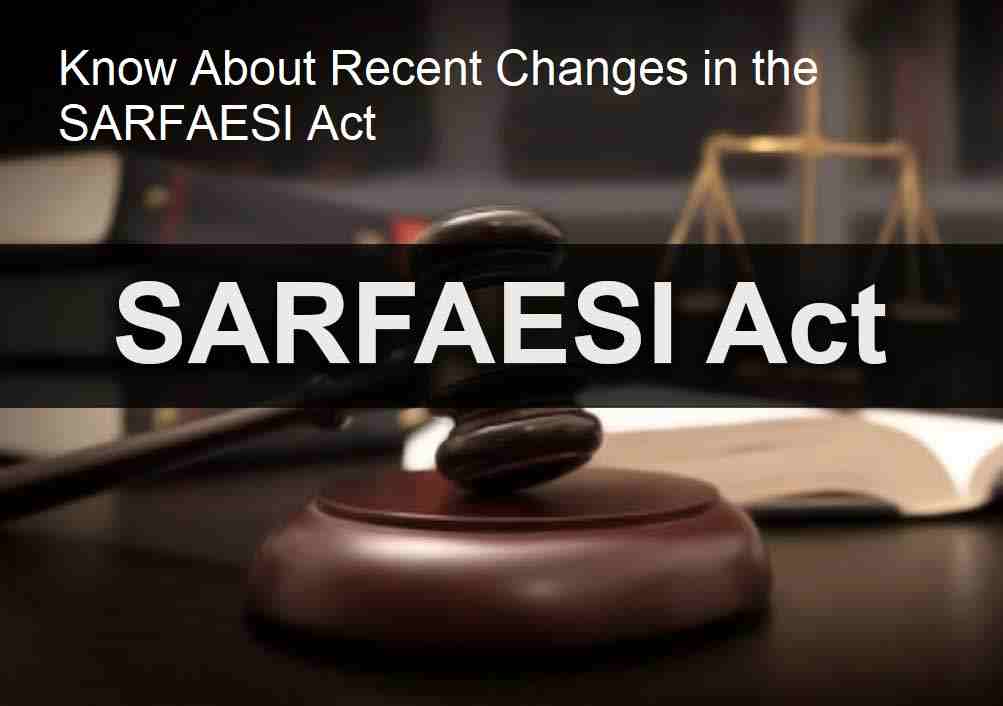The Securitization and Reconstruction of Financial Assets and Enforcement of Security Interest (SARFAESI) Act, 2002 was enacted to enable banks and financial institutions to recover their loans and dues from borrowers by enforcing the security interest created in their favor. The Act empowers banks and financial institutions to take possession of the secured assets and sell them through public auction to recover the dues. In this article, we will discuss the rights of an auction purchaser under SARFAESI Act.
Section 13(8) of the SARFAESI Act is a critical provision that relates to the borrower's right to redeem their property, and it has certain implications when it comes to the timing of the sale of the secured assets. Here's a detailed explanation of this provision:
-
Introduction The SARFAESI Act is a powerful tool for banks and financial institutions to recover their loans and dues from defaulting borrowers. One of the key provisions of the Act is the power to take possession of the secured assets and sell them through public auction. The auction purchaser, who buys the property at the auction, has certain rights under the Act.
-
Right to Obtain Delivery of Possession The auction purchaser has the right to obtain delivery of possession of the property from the borrower. If the borrower refuses to hand over possession, the auction purchaser can seek the assistance of the District Magistrate or the Chief Metropolitan Magistrate, as the case may be, to take possession of the property.
-
Right to Inspect the Property The auction purchaser has the right to inspect the property before the auction. This is important to ensure that the property is in good condition and free from encumbrances. The auction purchaser should exercise due diligence before participating in the auction.
-
Right to Receive Marketable Title The auction purchaser has the right to receive marketable title to the property. The title should be free from any encumbrances or defects. The auction purchaser should ensure that all necessary documents and approvals are in place before taking possession of the property.
-
Right to Claim Compensation If the auction purchaser suffers any loss or damage due to the wrongful possession or dispossession of the property, they have the right to claim compensation from the borrower. The auction purchaser can also claim compensation from the secured creditor if the creditor has failed to disclose any material defects in the property.
-
Right to Seek Redressal If the auction purchaser faces any issues or disputes with respect to the auction or the property, they have the right to seek redressal. The auction purchaser can approach the Debts Recovery Tribunal (DRT) or the High Court, depending on the amount involved.
The SARFAESI Act, which stands for the Securitization and Reconstruction of Financial Assets and Enforcement of Security Interest Act, 2002, is an important piece of legislation in India that provides banks and financial institutions with the legal framework to recover their non-performing assets (NPAs) by enforcing the security interest they hold in the assets of borrowers.
Section 13(8) of the SARFAESI Act is a critical provision that relates to the borrower's right to redeem their property, and it has certain implications when it comes to the timing of the sale of the secured assets. Here's a detailed explanation of this provision:
-
Right to Redeem: Under Section 13(8), the borrower has the right to redeem their property by repaying the outstanding loan amount along with any additional charges, such as interest, legal expenses, and other costs incurred by the lender in relation to the enforcement of security interest. In essence, this provision allows the borrower a chance to clear their dues and reclaim the property from the lender.
-
Available Till Sale Certificate Is Registered: The borrower's right to redeem is available until a sale certificate is registered by the authorized officer. The sale certificate is a document issued by the authorized officer (usually a bank official) after the auction of the secured assets. It certifies the successful sale of the property to the highest bidder.
-
Possession Is Handed Over: In addition to the sale certificate being registered, the borrower's right to redeem is available until possession of the secured asset is handed over to the buyer. This means that even if the property has been sold in an auction, the borrower can still redeem it until the new owner takes physical possession of the property.
The purpose of Section 13(8) is to ensure that the borrower has a fair opportunity to settle their outstanding dues and retain their property, even in the late stages of the enforcement process. It prevents the lender from immediately depriving the borrower of their property once the property is sold at auction but not yet taken over by the new owner. This provision aims to strike a balance between the rights of the borrower and the lender in cases of asset recovery.
It's worth noting that these provisions are subject to the specific details of the loan agreement and the legal procedures followed by the lender. Borrowers and lenders are encouraged to seek legal advice and assistance when dealing with matters related to the SARFAESI Act to ensure that their rights and obligations are appropriately addressed. Additionally, amendments to the SARFAESI Act or changes in legal interpretations may impact the specific rights and procedures related to the Act, so it's essential to stay updated with the latest developments in this area of law.
Conclusion The SARFAESI Act is an important legislation that empowers banks and financial institutions to recover their loans and dues from defaulting borrowers. The auction process under the Act is a crucial part of the recovery process. The auction purchaser has certain rights under the Act, including the right to obtain possession, inspect the property, receive marketable title, claim compensation, and seek redressal. The auction purchaser should exercise due diligence and take necessary precautions before participating in the auction to avoid any issues or disputes in the future.
